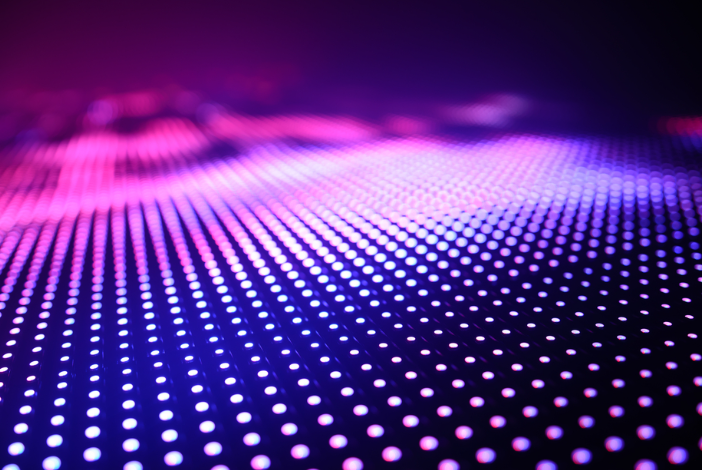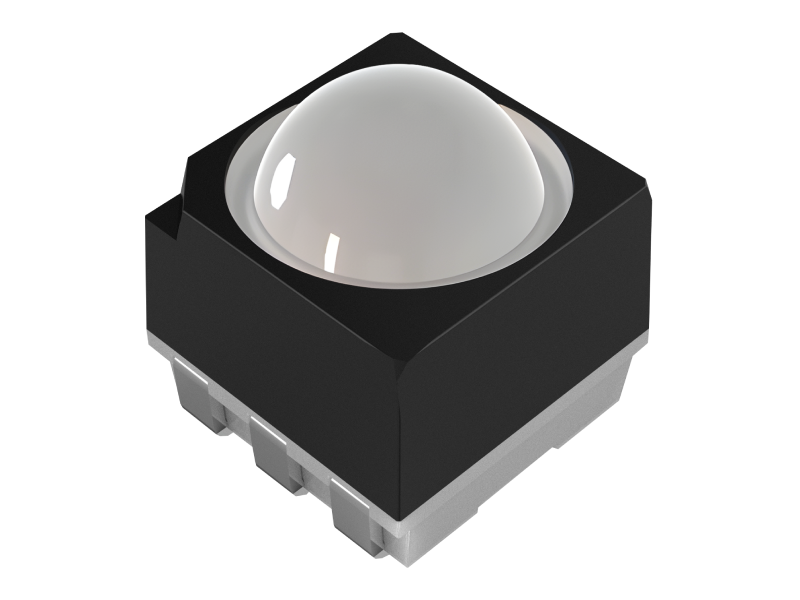What affects LED screen brightness
LED screen brightness and application scenarios
Kinglight LED – different brightness levels for all scenarios application
When we’re about to purchase an LED screen,we often see clear figures stating the brightness of the screen on the first page of its manual. So why is LED screen brightness so important? That is because in daily use, the screen brightness directly affects the visibility of the contents on the screen. Only with an appropriate brightness, we can acquire clear images at a certain environment, and meanwhile avoid too bright screen hurting your eyes at dim conditions. And also, excessive brightness often means a waste of energy.

Here in this article, we’ll dive into the world of LED screen brightness, see what it is, and explore the factors that decide LED screen brightness, and learn how LED screen brightness affects its application scenarios.
LED screen brightness refers to the luminous flux emitted per unit area by an LED display in a specific environment. It is one of the important indicators for measuring the luminous performance of an LED display. And we usually describe it in nits. LED screen brightness can vary from several hundred nits to more than 10 thousand nits.
Simply put, LED screen brightness determines how bright the picture appears when we watch it. The higher the brightness, the clearer the picture will be when viewed in strong ambient lighting environment or from a distance; while the lower the brightness, the less bright the images are.
In addition, excessive LED screen brightness will probably result in uncomfortable viewing experience; and oppositely, too weak brightness may make the content on the screen not being seen clearly.
Many factors can affect LED screen brightness, including the luminous efficiency of LEDs, the driving current of the screen, the ambient lighting conditions where you use the screen, etc. When designing and selecting LED screens, it is necessary to determine the appropriate brightness level based on the specific application scenarios and needs to ensure that the visual content is presented in the best condition.
In the previous section, we have briefly introduced some of the main factors that affect the brightness of LED screens. Now, let’s take a closer look at these factors and their impact on LED screen brightness.
LED luminous intensity and density:
The first factor that affects LED screen brightness we should consider must be the luminous intensity and the density of the LEDs, which are pixel units of the screen.
High-quality LEDs usually have higher luminous intensity and can produce brighter light in the same area. At meanwhile, the density of the LED also affects the brightness. The higher the density, the more LEDs per unit area, and the higher the screen brightness.
Power supply voltage:
LED is a voltage-sensitive device. So voltage of the power supply for the scree also affects its brightness.
If the power supply voltage is insufficient, the LED will not work properly, resulting in insufficient brightness. Therefore, a stable power supply voltage is one of the important factors to ensure the brightness of the LED screen.
Low quality or degraded LEDs:
Low quality LEDs with insufficient power or unstable performance, or degraded LEDs after long time usage will also affect LED screen brightness.
Heat dissipation design:
LEDs generate heat when working. If the heat dissipation design is poor, the LED temperature will be too high, which will affect its luminous efficiency and life. Therefore, a good heat dissipation design is the key to ensure that the LED screen works stably for a long time and maintains high brightness.
Environmental factors:
Environmental factors such as temperature and humidity can also affect the brightness of the LED screen. For example, in a high temperature environment, the luminous effect of the LED will decrease; in a humid environment, LEDs and circuits are prone to corrosion, affecting the brightness.
Control System:
The control system of the LED screen is responsible for adjusting parameters such as brightness and contrast. If the control system fails or is improperly set, it will also cause abnormal brightness of the LED screen.
Hence, we can see that LED screen brightness can be affected by various factors, and it is necessary to start from the selection of LEDs, the stability of the power supply voltage, the rationality of the heat dissipation design, the control of environmental factors and the normal operation of the control system.
Different LED screen brightness are suitable for different application scenarios. According to the different brightness, we can categorize LED screens into three different types and each of them has different application scenarios.
Low brightness LED screen usually refers to LED screen with brightness of several hundred nits.
Application scenarios:
Soft light indoor environment: such as cinemas, studios and other places that require low-light environment and soft visual experience. Low brightness LED screens can reduce glare and provide a more comfortable viewing experience.
Short distance viewing: In places where you need to observe details or text content in detail, such as museums and exhibition halls, low brightness can avoid eye fatigue.
Features:
Consumes less electricity and helps save energy.
Produces soft pictures and reduces visual stimulation.
Medium brightness LED screen indicates LED screen having a medium level of brightness for the application scenarios in between the soft and strong ambient light environments.
Application scenarios:
Indoor environment: such as business meetings, exhibitions, speeches and other occasions, medium brightness LED screens can clearly present content under indoor lighting conditions and have high visibility.
Information release: in public places such as stations, airports, hospitals, schools, etc., it is used to display traffic information, flight information, hospital guides, school announcements, etc., and the medium brightness is neither too glaring nor too clear.
Features:
Moderate brightness, suitable for most indoor and semi-outdoor environments.
Balances brightness and power consumption, economical and practical.
High brightness LED screen often describes LED screen with brightness over several thousand nits, or even more than 10 thousand nits. This type of LED screen are mostly used for outdoors, such as an outdoor LED signage which might be exposed to direct sunshine.
Application scenarios:
Outdoor environments: such as outdoor billboards, stadiums, stations, etc., high-brightness LED screens can resist strong light exposure, ensuring that the content is still clearly visible under strong sunlight.
Large events: such as concerts, concerts, sports events, etc., high-brightness LED screens are used to display performance content, game information and sponsor advertisements, providing audiences with a shocking visual experience.
Features:
High brightness and strong resistance to strong light interference.
Bright colors and strong visual impact.
But it consumes more electricity, so attention should be paid to heat dissipation and energy-saving design.
Kinglight, as a leading enterprise in LED packaging, specializes in supplying various types of LEDs (for screen manufacturing) with different brightness levels, which can fully meet the brightness requirements in different application scenarios.
Micro-pitch LED screens usually have ultra-high resolution and are mainly used for indoor or semi-outdoor ultra-high-definition displays, so their viewing distance is relatively short. Kinglight’s Mini and Micro LEDs are not only compact in size, and their brightness is generally maintained between 800 nits and 3000 nits, which is very suitable for building ultra-high-definition, micro-pitch LED screens for indoor and semi-outdoor environments with relatively low ambient light, and avoiding glare caused by excessive brightness when viewed from close distance, thus bringing a better visual experience to end users.
The application scenarios of stage rental LED screens are relatively complex, and often vary greatly due to the actual use site and purpose of the rental LED screen. Therefore, compared with mini LED and micro LED series products, Kinglight LEDs for rental displays have a relatively larger brightness range, generally between 1000 nits and 7000 nits, which can meet the application of different brightness environments indoors and outdoors at the same time.
LED cinema display is a new application scenario that has emerged in recent years with the development of LED display technology, and has become a hot topic nowadays. Cinemas are often closed and extremely dimly lit environments, and excessive brightness often irritates viewers and causes severe discomfort. Therefore, LED cinema screens generally require lower brightness.
Therefore, Kinglight P3 series LEDs provide a full-screen brightness of 1000 nits. They’re ideal for making LED cinema displays. In addition, Kinglight P3 series LEDs also comply with the DCI-P3 color gamut standard, which can provide a wider color gamut expression than conventional LEDs, thereby providing the audiences inside an LED cinema with an ultimate viewing experience.
Kinglight has also developed dedicated LEDs for augmented reality (XR) and virtual production displays, namely the Kinglight XR series and RGBW LEDs. Virtual production requires more sufficient brightness than a common indoor LED display to ensure that the picture has enough light and dark contrast, and the reference value of the full screen brightness provided by this series of LEDs is 2000 nits.
Kinglight also offers LEDs for outdoor UHD LED screens, which are watched at a relatively close distances. Therefore, their brightness is generally maintained between 3000 nits and 7000 nits, which not only ensures visibility in strong outdoor light environments, but also ensures that the screen will not be dazzling due to excessive brightness, especially at a relatively short distance.
Fixed LED screens are often installed in open and conspicuous locations or on the protruding facades of high-rise buildings. They need to face strong direct sunlight or interference from other strong outdoor light sources, so ultra-high brightness is often the main feature of fixed LED screens. The brightness range of Kinglight LEDs for fixed screens is generally above 6000 nits, and even up to 14000 nits (such as 2727-A4-T70 lens LED). In addition, the series also has an LED with a brightness of 4000 nits, the 1820-KS3B, which can meet the fixed installation needs in a relatively dim light environments.

Kinglight 2727-A4-T70 lens LED
In conclusion, LED screen brightness should be determined according to the specific application scenario and needs. Low brightness is suitable for indoor soft environment and close viewing; medium brightness is suitable for general indoor environment and information release; high brightness is more suitable for outdoor environment and large-scale events. In actual application, the performance indicators of the LED screen such as contrast, resolution, color saturation, etc. need to be comprehensively considered to achieve the best visual effect and user experience.